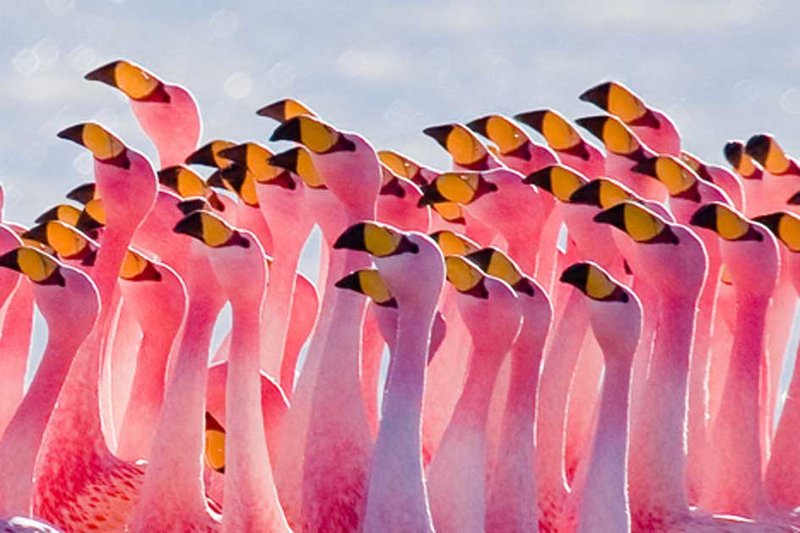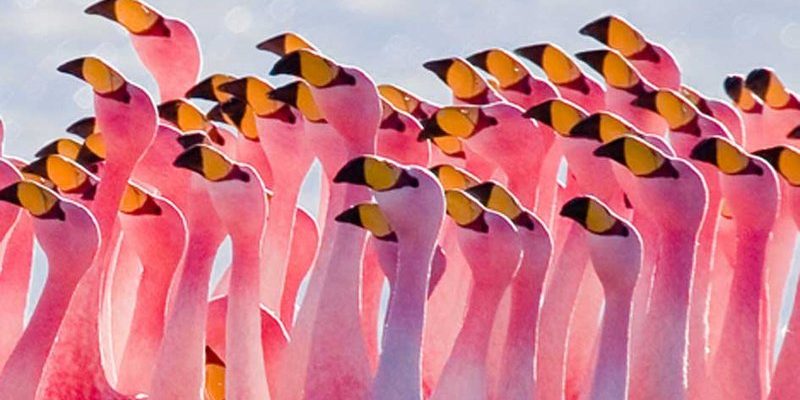
Flamingos are more than just a pretty sight at tropical resorts; they’re woven into stories and traditions that reflect the values, beliefs, and environments of the people who live nearby. Think of them as messengers from nature, bridging the gap between the wild and the human world. As we dive deeper into the role of flamingos in local cultures and folklore, you’ll find that their significance is as colorful as their plumage.
Flamingos in Native American Folklore
In various Native American cultures, animals often embody traits that people aspire to or lessons they need to learn. For some tribes, the flamingo symbolizes grace and balance. The bird’s ability to stand on one leg captures a sense of poise that many admire and strive for in their daily lives.
Here’s the thing: In some tales, the flamingo’s graceful movements in the water represent harmony with nature. It’s said that when one finds themselves feeling unbalanced or overwhelmed, they should take a moment to reflect on the flamingo’s stillness. Just as the bird pauses and observes the world around it, so too should we take a breath and find our footing again. When you think about it, this connection to nature serves as a gentle reminder to live mindfully.
Flamingos as Symbols of Love
Flamingos also appear in love stories and traditions among various tribes. Their vibrant pink feathers have inspired tales of passion, symbolizing both beauty and romance. For some communities, a pair of flamingos represents undying love, often linked to the idea of loyalty and companionship.
Imagine a couple hand-in-hand, inspired by the steadfast nature of flamingos who mate for life. In some cultures, seeing a flamingo can be a sign that love is in the air. It’s fascinating how these birds can remind us of our own relationships, encouraging us to cherish love and commitment.
Flamingos in Caribbean Culture
In the Caribbean, flamingos often represent a connection to the vibrant landscapes of islands like the Bahamas and Cuba. These birds are integral to the local ecosystems, serving as a reminder of the delicate balance between nature and human life. The stunning pinks and reds of flamingos mirror the rich colors found in Caribbean art and music, underscoring their importance beyond just their ecological role.
Here’s where it gets even more interesting: In some Caribbean myths, flamingos are viewed as messengers from the spirits, guiding people through difficult times. When people spot a flamingo in their vicinity, they often take it as a sign of good fortune or an impending change in their lives. This belief underscores the deep respect local communities have for nature and the symbols it offers.
Celebrations and Festivals
Flamingos are often incorporated in festivals and celebrations throughout the Caribbean, showcasing their cultural significance. From vibrant parades to art exhibits, these birds serve as a focal point for expressing local pride and artistry.
During specific events, you might see flamingo-themed decorations, music, and dance routines that celebrate the spirit of these majestic birds. By engaging in these festivities, locals not only honor the flamingo but also advocate for conservation efforts, reminding everyone of the importance of protecting their natural environment.
Flamingos in African Cultures
Moving to Africa, flamingos play vital roles in several cultures, particularly in countries like Kenya and Tanzania. Renowned for their striking colors and social behavior, flamingos often symbolize community and togetherness. In the Maasai culture, for instance, these birds embody the notion of unity among families and tribes.
In many African traditions, the flamingo is often seen as a guide, leading individuals toward collective strength. Local folklore may share stories about how flamingos work together to find food, teaching lessons about cooperation and the power of community. These narratives serve to inspire younger generations to value collaboration and support among their peers.
Connection to Water and Life
Flamingos also represent the life-giving properties of water—a crucial element in many African societies. The presence of these birds often indicates healthy ecosystems, signaling to communities that the land is thriving. This connection enhances the flamingo’s status as a symbol of health, abundance, and sustainability.
In local ceremonies, you might notice rituals that pay tribute to the flamingo and its association with water sources. These practices honor the delicate relationship between people and nature, emphasizing the importance of preserving the environment for future generations.
Flamingos in Art and Popular Culture
Flamingos have also made their way into various forms of art and popular culture. You might have seen them in paintings, sculptures, or even as cute lawn decorations. The fascination with flamingos often reflects their exotic nature and striking appearance. They serve as a common motif in tropical-themed decor and have become synonymous with relaxation and vacation vibes.
In recent years, flamingos have appeared in fashion trends and social media, as people find joy in their quirky charm. Whether it’s a flamingo-themed party or a cute flamingo emoji on your phone, these birds continue to capture the hearts of many.
Literature and Stories
Flamingos have also found a place in literature, where they’re often used as symbols of beauty and the whimsical nature of life. From children’s books to poetry, their unique characteristics make them perfect for inspiring creativity. Stories about flamingos allow readers to explore adventures that highlight themes of friendship, love, and growth.
You might even come across charming tales where flamingos embark on journeys, reflecting the idea that beauty can be found both in the journey and the destination. These narratives serve as wonderful tools to teach values and lessons while keeping readers engaged with a bit of whimsy.
The Importance of Conservation
Despite their charm and cultural significance, flamingos face threats from habitat loss and climate change. Protecting their habitats is crucial not only for their survival but also for preserving the cultural stories and connections people have with these birds.
Conservation initiatives often focus on educating communities about the importance of maintaining healthy ecosystems. Many local cultures celebrate flamingos as part of their heritage, making it vital to work together to ensure these birds continue to thrive.
You might wonder how you can help. Simple actions like supporting local conservation efforts, spreading awareness, and participating in clean-up events can make a difference. By taking part in these movements, you not only honor the flamingo but also contribute to the well-being of our planet.
Flamingos are far more than just beautiful birds; they serve as vital symbols in cultures around the world. From representing love and community to embodying grace and balance, these birds have woven their way into the fabric of folklore and traditions.
By understanding the role of flamingos in local cultures, we can appreciate the powerful connections between nature and human life. The next time you spot a flamingo, remember that it carries with it a wealth of stories, meanings, and lessons that continue to inspire us all. So, let’s embrace the flamingo, not just as a striking creature but as a symbol of what it means to live in harmony with both ourselves and the world around us.

